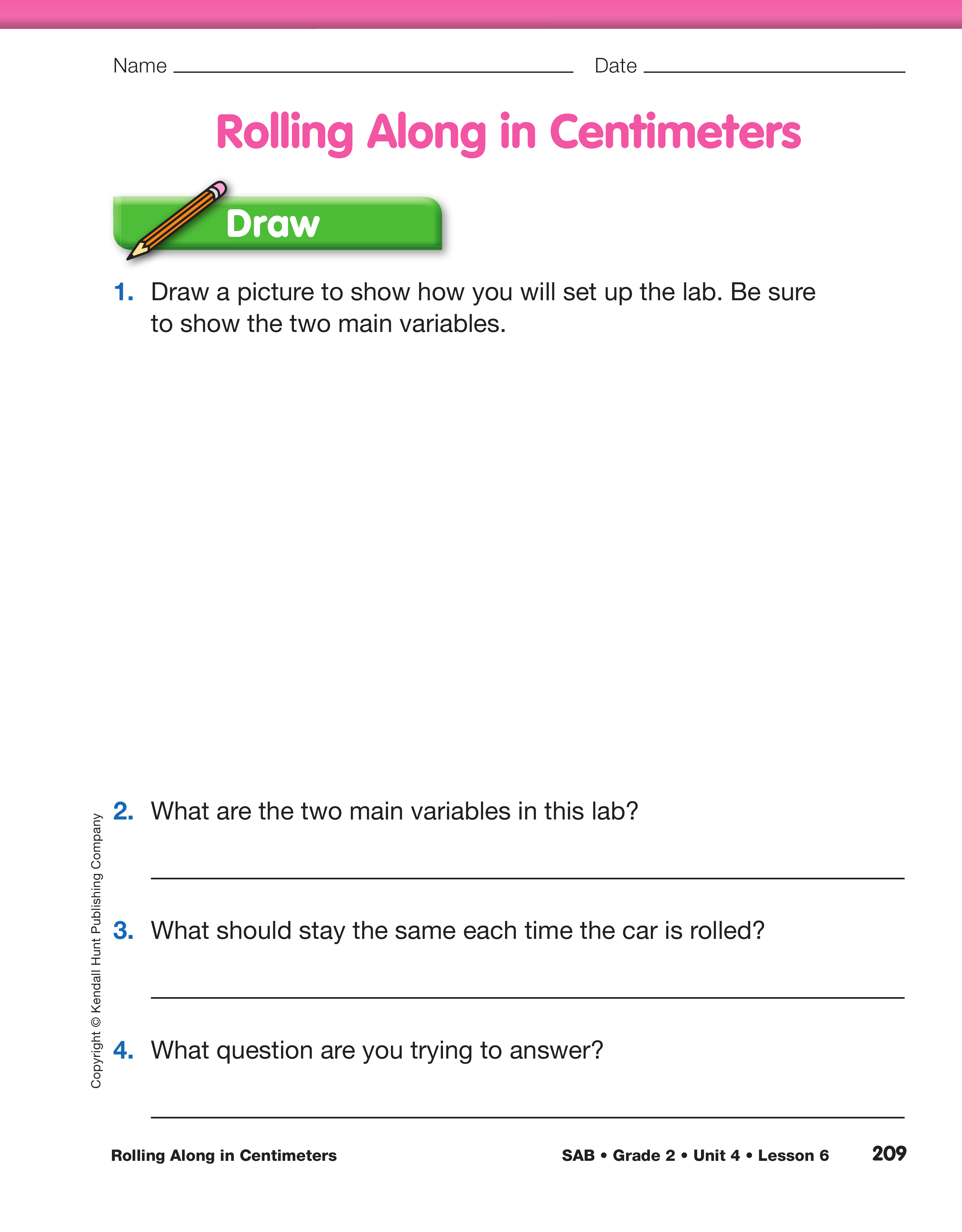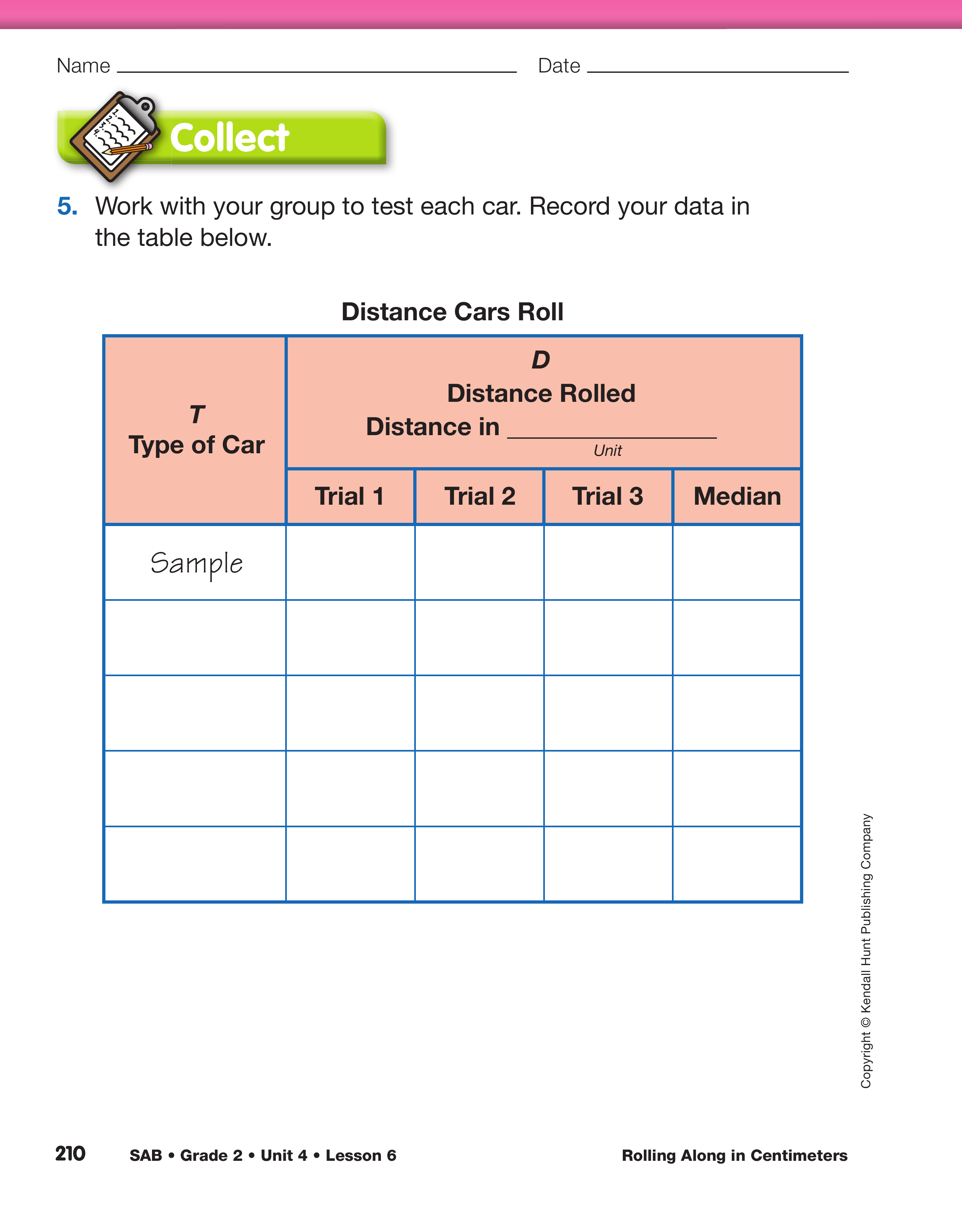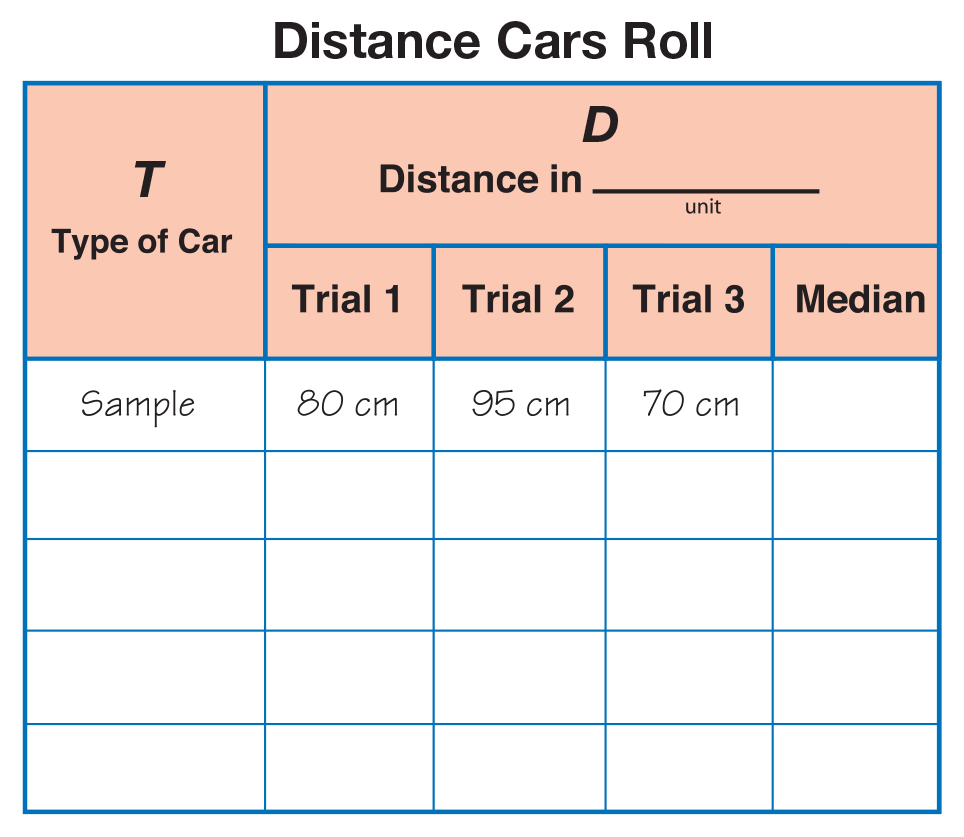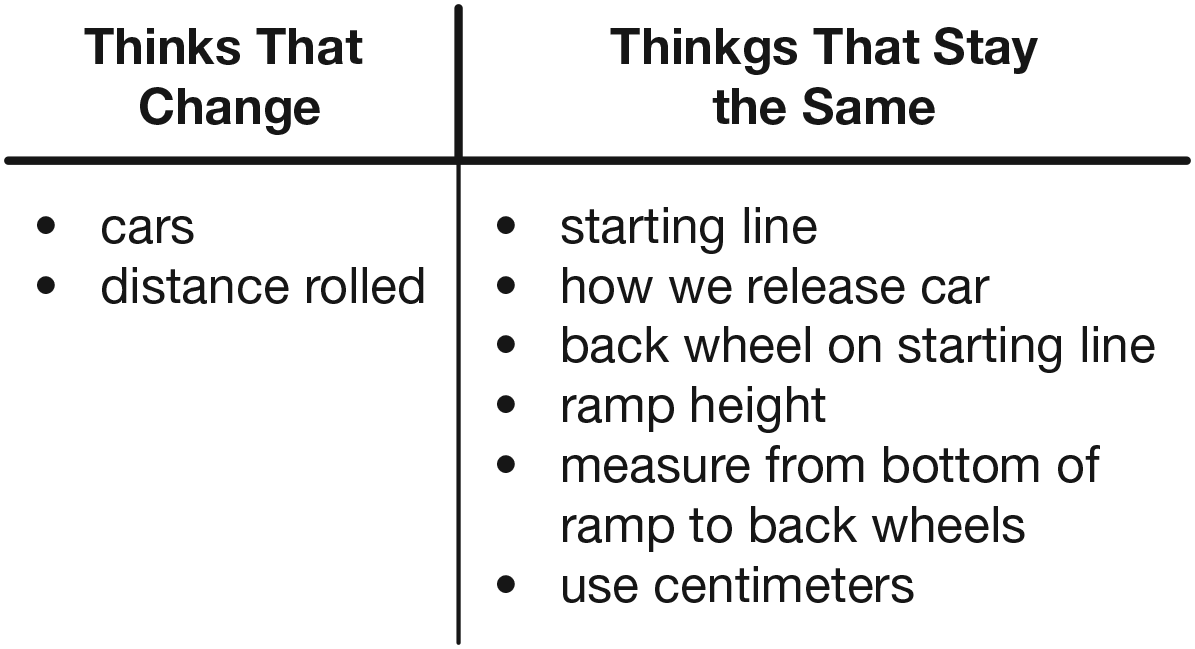Rolling Along in Centimeters
Est. Class Sessions: 3–4Developing the Lesson
Part 2: Prepare for the Lab: Keep Things Fair
Demonstrate Lab Procedure. With the setup illustrated in Figure 2 prominently displayed, perform a number of trial runs to demonstrate the complete lab procedure using the following guidelines:
- Discuss the ramp setup. Decide on the height of the ramp and where the starting line is marked. Measure each using a meterstick.
- As a class, agree that the back wheels of the car will be placed on the starting line.
- Select a car and place it on the starting line.
- Let go of the car. Mark where the car stops (back wheels) with another piece of tape. Write "1" on this tape to indicate first try.
- Repeat this procedure two more times, releasing the car from the same point. Label the pieces of tape for these trials "2" and "3," respectively.
- Direct students' attention to the tape marks for each trial. Ask a volunteer to use the meterstick to find a measurement for each trial.
- Discuss possible reasons why the distances in the three trials differed.
- Display a copy of the data table in the Rolling Along in Centimeters pages in the Student Activity Book. Discuss the column heads in the data table. Students should not be concerned about the column titled "Median." That column will be discussed later. Record the three measurements as shown in the data table in Figure 3 in the row marked "Sample." Explain that each car will be rolled down the ramp three times. Save the sample data on the display for further discussion.
Discuss Controlled Variables. Explain that the class is going to determine which car is the "best roller." In planning the experiment students should discuss how to keep everything "fair." Write two headings on the board or chart paper: "Things that Stay the Same" and "Things That Change."
Ask:
Write their responses under the "Things That Change" heading. The different cars and the distance the cars travel are the two main variables. Everything else should remain the same. See Figure 4 for a sample chart.
Ask:
Write their responses under the heading "Things That Stay the Same."
As you write each response, ask:
Some possible responses to keep the investigation fair include:
- starting each car from exactly the same place;
- releasing the car consistently (just letting go, instead of pushing it);
- placing the same part of the car on the starting line (back wheel);
- keeping the ramp and the ramp height the same;
- consistently measuring the distance the car rolls for each roll (from the bottom of the ramp to the back wheels of the car);
- using the same unit of measure each time.
Summarize the discussion by pointing out that the things that need to stay the same are called fixed (controlled) variables. By keeping all the fixed variables the same and by changing only the car, the results (distances from the bottom of the ramp to the back wheels of the cars in centimeters) are considered "fair."
Draw a Picture. Students will use the Draw section in the Rolling Along in Centimeters pages in the Student Activity Book to plan their experiment before they begin. Help students visualize a drawing that will represent the experiment's main variables (type of car and the distance rolled) as well as the parts of the setup that remain the same (the supported ramp with a starting line).
Ask:
Encourage students to include as many details as possible and to label all components of their drawing, including the two main variables and the fixed (controlled) variables.
As you review students' drawings, look for evidence of the following: an elevated ramp, a meterstick, a starting line, a finish line, a toy vehicle (car), and some representation of the distance to be measured. See Figure 5.
Encourage students to refer to their drawings as they conduct the Rolling Along in Centimeters lab.


















